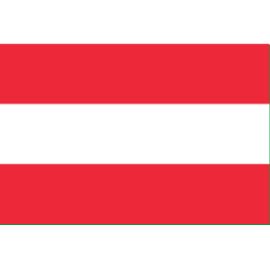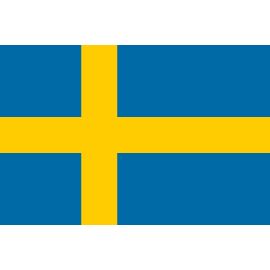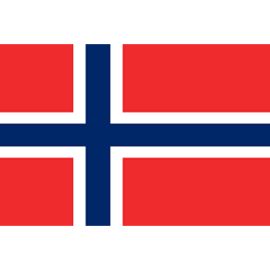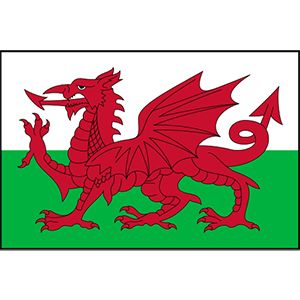Resultado de búsqueda
- Temporada regularUEFA Nations League
 Estonia5 Sep,14:45 EDT
Estonia5 Sep,14:45 EDT Slovakia
SlovakiaOtros partidos
Grupo B J G E P Ptos. 1  Francia
Francia8 7 1 0 22 2  Holanda
Holanda8 6 0 2 18 3  Grecia
Grecia8 4 1 3 13 4  Republic of Ireland
Republic of Ireland8 2 0 6 6 5  Gibraltar
Gibraltar8 0 0 8 0 Grupo C J G E P Ptos. 1  Inglaterra
Inglaterra8 6 2 0 20 2  Italia
Italia8 4 2 2 14 3  Ukraine
Ukraine8 4 2 2 14 4  North-Macedonia
North-Macedonia8 2 2 4 8 5  Malta
Malta8 0 0 8 0 Grupo E J G E P Ptos. 1  Albania
Albania8 4 3 1 15 2  Czech Republic
Czech Republic8 4 3 1 15 3  Polonia
Polonia8 3 2 3 11 4  Moldova
Moldova8 2 4 2 10 5  Faroe Islands
Faroe Islands8 0 2 6 2 Grupo F J G E P Ptos. 1  Bélgica
Bélgica8 6 2 0 20 2  Austria
Austria8 6 1 1 19 3  Suecia
Suecia8 3 1 4 10 4  Azerbaijan
Azerbaijan8 2 1 5 7 5  Estonia
Estonia8 0 1 7 1 Estonia (en estonio: Eesti ⓘ), oficialmente República de Estonia (Eesti Vabariik), es uno de los veintisiete Estados soberanos que forman la Unión Europea, siendo el más pequeño de los tres países bálticos. Limita al sur con Letonia, al este con Rusia, al norte con el golfo de Finlandia y al oeste con el mar Báltico. [5]
Estonia, officially the Republic of Estonia, is a country by the Baltic Sea in Northern and Eastern Europe. It is bordered to the north by the Gulf of Finland across from Finland, to the west by the sea across from Sweden, to the south by Latvia, and to the east by Lake Peipus and Russia.
- Overview
- Land
- Relief and drainage
- Climate
- Plant and animal life
- Ethnic groups
- Language
- Religion
- Settlement patterns
Estonia, country in northeastern Europe, the northernmost of the three Baltic states. Estonia’s area includes some 1,500 islands and islets; the two largest of these islands, Saaremaa and Hiiumaa, are off mainland Estonia’s west coast.
Estonia has been dominated by foreign powers through much of its history. In 1940 it was forcibly incorporated into the U.S.S.R. as one of its constituent republics. Estonia remained a Soviet republic until 1991, when, along with the other Baltic states, it declared its independence. The Soviet Union recognized independence for Estonia and the other Baltic states on September 6, 1991, and United Nations membership followed shortly thereafter. Estonia set about transforming its government into a parliamentary democracy and reorienting its economy toward market capitalism. It sought integration with greater Europe and in 2004 joined the North Atlantic Treaty Organization (NATO) and the European Union (EU).
Situated in northeastern Europe, Estonia juts out into the Baltic Sea, which surrounds the country to the north and west. To the east Estonia is bounded by Russia—predominantly by the Narva River and Lakes Peipus (Peipsi; Russian: Chudskoye Ozero), Tyoploye, and Pskov—and to the south it is bounded by Latvia.
The Estonian landscape is largely the product of glacial activity. The south is covered with moraine hills, and the central part of the country abounds in elongated hills with flat tops. Northern Estonia is characterized by long narrow swells consisting of deposits left by glacial rivers that formed during the melting of ice. Extensive sandy areas mark what was once the glacier’s edge. Estonia’s relief is thus generally undulating, with small hills and numerous lakes, rivers, and forests lending a mild and picturesque aspect to the scene, particularly in the south.
Britannica Quiz
You Name It!
The mean elevation is 164 feet (50 metres) above sea level; only about one-tenth of the territory lies at elevations exceeding 300 feet (90 metres). In the southeast is the Haanja Upland, containing Suur Munamägi (Great Egg Hill), which, at 1,043 feet (318 metres), is the highest point in Estonia.
Estonia abounds in rivers, which flow to the Gulf of Finland, to the Gulf of Riga, and into Lake Peipus. The longest river, the Pärnu, stretches for about 90 miles (145 km); other important rivers are the Pedja, Narva, and Kasari. The country’s largest lake is Peipus, with a surface area of about 1,370 square miles (3,550 square km), which is shared with Russia. Lake Võrts is situated in south-central Estonia.
Students save 67%! Learn more about our special academic rate today.
The temperate and humid climate of Estonia differs sharply from the climates of regions to the east (in Russia) at the same latitude. The country lies in the path of air masses borne by cyclonic winds that originate in the North Atlantic Ocean and carry warm air in winter and cool air in summer. The northern and western coastal areas tend to be mil...
Mixed forests, with about 90 native species of trees and shrubs, cover almost half of Estonia’s territory. Most widespread are pines, firs, birches, and aspens; less common are oaks, maples, elms, and ashes. Scots pine is the most common native tree. Meadows occupy a large area, as do marshes and swamps, where one-quarter of Estonia’s 1,500 plant species are found.
About 60 species of mammals live in Estonia. The largest of these is the elk; roe deer, red deer, and wild pigs also are found. In the deep forests of the northeast, bears and lynx are encountered. Foxes, badgers, otters, rabbits, hare, and—along the riverbanks—mink and nutria (coypu) are fairly common. Fish (cod, herring, salmon, eel, plaice, and others) are of commercial importance. Birds are numerous and migratory; more than 300 species have been identified, few of which are year-round residents.
Compared with other European countries, Estonia has a large percentage of foreign-born residents and their children. Only about two-thirds of the population are ethnic Estonians. Russians are the most significant minority, comprising about one-fourth of the citizenry. Prominent among other ethnic minorities are Ukrainians, Belarusians, and Finns. T...
Estonian, the official language of the country, is a member of the Finno-Ugric branch of the Uralic language family. More than two-thirds of the populace speak Estonian as a first language; about an additional one-fourth speak Russian as their first language (mostly in the northeast), though few Estonians over age 60 or under age 20 speak the langu...
There is no state religion in Estonia, and many of the people are either nonreligious or atheist. The Christian majority includes a large slice of unaffiliated Christians, along with significant Evangelical Lutheran and Eastern Orthodox communities, as well as lesser numbers of Baptists, Methodists, and Roman Catholics.
As in the other Baltic states, Estonia’s population is predominantly urban (more than two-thirds). Ethnic Estonians make up the vast majority of the rural population, while the urban population has a preponderance of non-Estonians. Tallinn and Tartu are the two largest cities, though Helsinki, across the Gulf of Finland, is closer to Tallinn than T...
- Tallin y su ciudad vieja. Tallin es la capital y la ciudad más visitada que ver en Estonia.Su ciudad vieja es muy pintoresca, ya que conserva la estructura original del siglo XIII.
- Palacio Kadriorg, uno de los edificios más bonitos que ver en Estonia. En las afueras del casco antiguo de Tallin podrás visitar uno de los edificios más bonitos del país.
- Parque Nacional de Lahemaa. Estonia tiene sitios naturales preciosos. El más visitado es el Parque Nacional de Lahemaa, especialmente porque solo está a una hora en coche de Tallin.
- La catarata de Jägala, la más alta de Estonia. Muchos conocen Tallin pero no la belleza natural del país. Estonia cuenta con varias cataratas, aunque ninguna más alta que la catarata de Jägala.
Estonia fue el primer país del mundo en realizar sus elecciones en línea en 2005. Estonia es un líder mundial en el desarrollo de la tecnología blockchain. Estonia es un país ecológicamente sostenible. Estonia ha sido reconocida como una de las naciones más verdes del mundo.
Estonia, oficialmente República de Estonia (en estonio Eesti Vabariik), es una república báltica situada en el noreste de Europa. Desde 2004 forma parte de la Unión Europea. Limita al sur con Letonia, al este con Rusia, al norte con el golfo de Finlandia y al oeste con el mar Báltico.
16 de ago. de 2023 · Esto es Estonia Estonia inmensa: los ocho imprescindibles que hay que visitar en la sorpresa báltica Desde su capital hasta las islas más cautivadoras, el norte de Europa esconde en esta región un tesoro cultural, natural e histórico aún por descubrir.












































